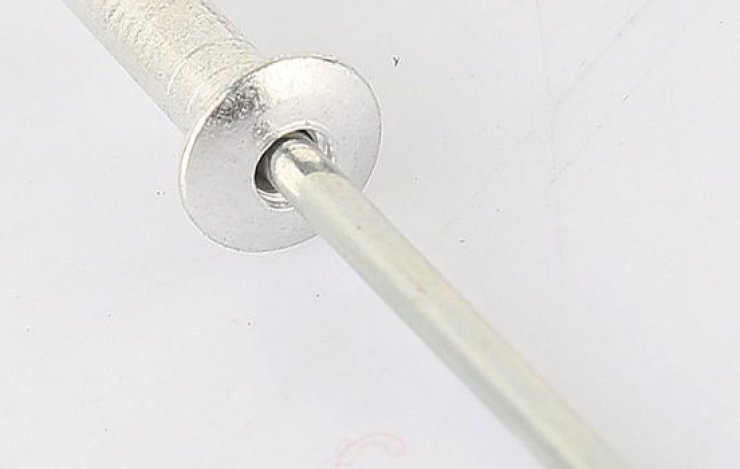


What Are The Types Of Rivets?
Standard Pop Rivet: Special alloyed aluminum body and steel nail They can be used for joining almost any material, mostly metallic surfaces, and it is the most used rivet type.
Standard Pop Rivet: Special alloy aluminum body and steel nail
They can be used for joining almost any material, mostly metallic surfaces, and are the most commonly used rivets.
Wide Head Pop Rivet: Special alloy aluminum body and steel nail
With a wider flange than the standard pop rivet, a fragile material such as plastic on the front of the materials to be joined provides a more firm grip and prevents the rivet head from being embedded in the assembled material or from being removed from the rivet.
Pop Rivet with Countersunk Head: Special alloy aluminum body and steel nail
The only difference from the standard pop rivet is that the flange part of the rivet body is countersunk. In this way, a flared hole is drilled on the surface to be riveted and a surface without ridge is obtained after riveting.
Closed Back Rivet: Special alloy aluminum body and steel nail
It is used to minimize the passage of liquid and gas after riveting.
Octopus Rivet (Spider Rivet): Special alloy aluminum body and steel nail
The standard pop rivet body provides a joint by expanding and shortening during the riveting process; The octopus rivet body, thanks to its special nail, is divided into four “+” shape. In this way, a brittle material such as plastic located on the back of the material to be joined provides a more firm grip and prevents the rivet body from being embedded in the assembled material or from the material being released from the rivet.
Wide Head Octopus Rivet: Special alloy aluminum body and steel nail
Recommended if the materials to be joined are brittle (such as plastic).
The standard pop rivet body provides a joint by expanding and shortening during the riveting process; The octopus rivet body, thanks to its special nail, is divided into four “+” shape. In this way, a brittle material such as plastic located on the back of the material to be joined provides a more firm grip and prevents the rivet body from being embedded in the assembled material or from the material being released from the rivet. Thanks to the wide flange, a brittle material, such as plastic, located on the front of the material to be joined, provides a more firm grip and prevents the rivet head from being embedded in the assembled material or from being released from the rivet.
Stainless Steel Rivet: Stainless steel body and stainless steel nail
It is used if no rust formation is desired after the riveting process.
Aluminum / Aluminum Rivet: Special alloy aluminum body and Special alloy aluminum nail
It is used if no rust formation is desired after the riveting process. Provides a more economical but weaker joint than stainless steel rivets.
Multigrip Rivet: Special alloy aluminum body and steel nail
The rivet body, which is made of a more durable material than the standard pop rivet, and the lines on the rivet body provide a stronger riveting process.
Wide Head Multigrip Rivet: Special alloyed aluminum body and steel nail
The rivet body, which is made of a more durable material than the standard pop rivet, and the lines on the rivet body provide a stronger riveting process. In addition, thanks to the large flanged body, the material located on the front of the riveted material provides a stronger hold.
Nut Rivet: Steel
Bolt threads can be applied to materials that can not be opened, even the most thin surfaces can be applied to bolts. After applying nut rivet to a thin sheet material, you can bolt the material you want here.

